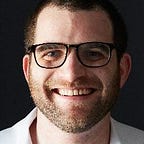Imagining Future Cities Is Hard. Here’s Why.
The great chroniclers of modern city streets, such as Jane Jacobs and William Whyte, had trouble imagining a city that followed fundamentally different rules than it did in their time. They saw the city in their time as representative of a universal truth about cities as they alway were and always would be, and assigned a universality to their conclusions accordingly. As we look at cities today and try to come up with the best way to leverage the explosion of innovation in the tech sector to improve cities’ functioning and city life, it behooves us to remember that even these intellectual giants of urbanism fell victim to this basic pitfall.
For example, in Death and Life of Great American Cities, perhaps the book with the single greatest impact on modern thinking about cities, Jane Jacobs assumed that to keep city streets safe required mom-and-pop shops and low-rise residential buildings. The owners of the former and residents of the latter would be so intimately connected to the street life that they would literally keeping a watchful eye on it. Accordingly she believed that the gentrifiers and tall buildings moving into her West Village neighborhood already in the 1960s would leave it less safe because they did not obey these patterns. She had the underlying concept correct — that busy sidewalks are the key to keeping a city street safe — but she could not imagine a world in which sidewalks were busy not because of housewives stringing their laundry out to dry and shop owners keeping one eye on the happenings outside their store entrances but because of sheer volume of pedestrians and broken windows policing even as Manhattan grew taller and more corporate.
About 20 years later, in City: Discovering the Center, another tremendously influential tome, William Whyte did a fantastic job of chronicling street personalities in the New York of the 1980s like Mr Magoo, a colorful civilian who directs traffic in the middle of 5th Avenue and 59th Street; and more prosaically, the buskers plying their trade on city sidewalks. He even measured pedestrian flow around them to demonstrate that they rarely if ever blocked people from getting by. However while he was conscious of the possibility that the size of a city could have an impact in the applicability of his observations, it does not seem to have occurred to him that their relevance might also be constrained to a period in time. He could not foresee that New York City in 2016 would carry on just fine without such characters, or that the sidewalks indeed could become so crowded that there really would not be space for them.
When we think about how technologies such as autonomous vehicles, drones, and IoT will change cities, we must be careful to remember these lessons and not assume that the dynamics of the city as they are today will be the dynamics of the city forever.
What is further interesting about both of the above examples is that neither was driven by technology. Most of the change in cities happens for reasons unrelated to technology: changing attitudes towards transportation modes, zoning, and public space; evolving fashions, both physical and intellectual; political change which results in certain neighborhoods or projects being prioritized over others. Even when technology is the catalyst, the outcome is more the result of the pattern of technology adoption and the ensuing politics than anything intrinsic to the technology itself.
The hardest parts of predicting the impact of technology on cities will be to differentiate the immutable elements of city life from those that merely reflect city life as it is today, and to predict the political alliances that will evolve around the technology and the result of these alliances, both in terms of final outcome and the timeline and path to get there.
